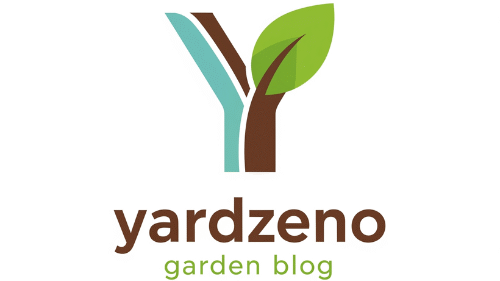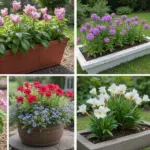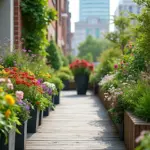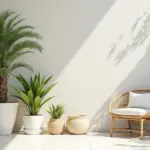Raised bed gardens can transform even the tiniest urban spaces into lush, flourishing landscapes.
These creative garden designs not only add beauty to your home but also maximize every inch of available space for your plants to thrive.
From vertical gardens to multi-level beds, we’ll explore innovative ideas that not only look stunning but also cater to small-space gardening needs. Whether you’re a seasoned gardener or just starting out, these vertical gardening ideas are sure to inspire your next gardening project. Let’s dive in!
1. Lush Vertical Wall Gardens
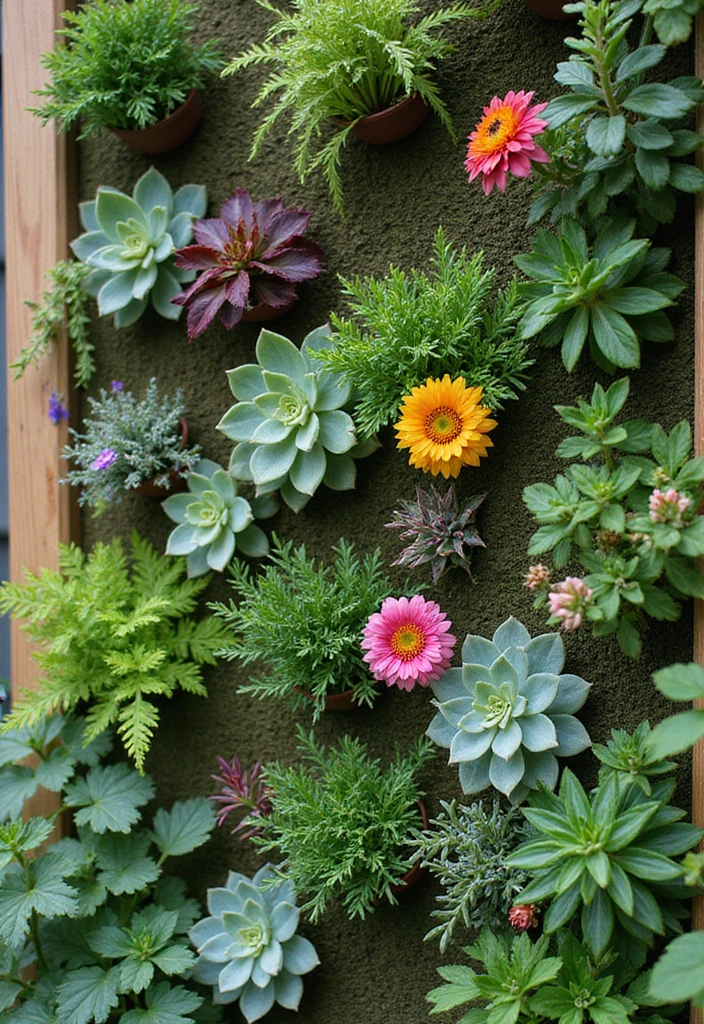
Turn a plain wall into a stunning vertical garden!
Using wall-mounted planters or trellis systems, you can create a lush tapestry of greens and flowers that not only beautifies your space but also makes efficient use of vertical space. Succulents, herbs, and trailing vines are perfect for this method as they cascade beautifully while requiring minimal soil depth.
A key benefit is that wall gardens can also act as natural insulators, helping to regulate temperature in your home. Plus, they can be easily set up in any sunny spot, balcony, or small patio.
Tips: Make sure to select plants suited for your local climate and light conditions.
Consider a drip irrigation system to optimize watering.
Rotate plants seasonally for variety.
Transform your walls into lush vertical gardens! With minimal soil depth, you can create stunning displays of greens and flowers that beautify any space while maximizing your raised bed garden design.
2. Stacked Planter Boxes
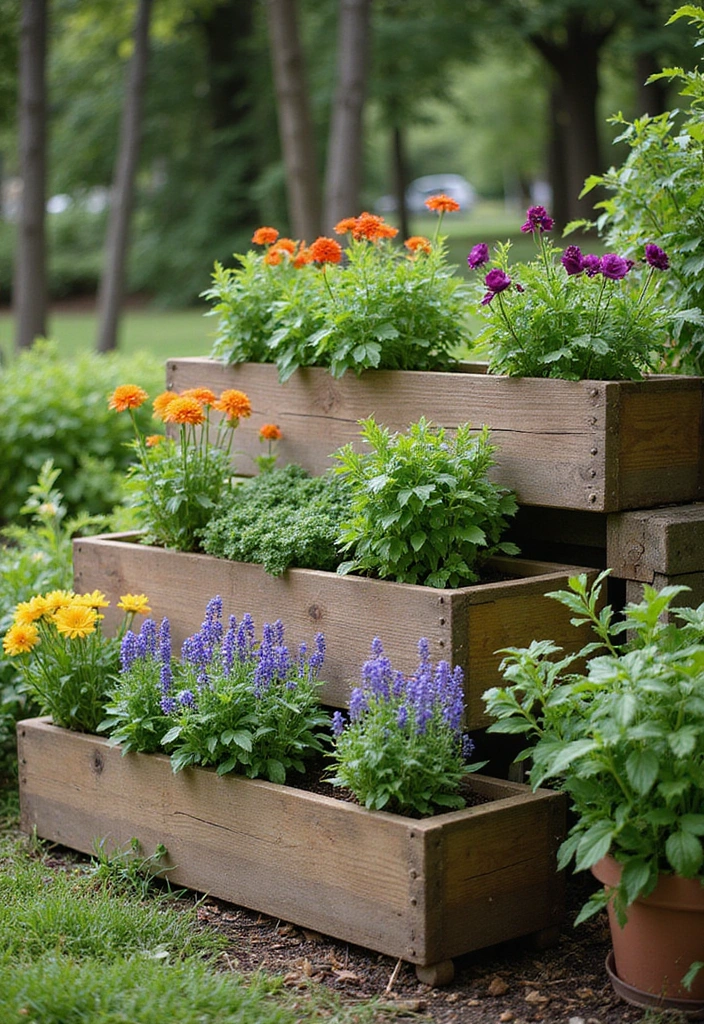
Stacking planter boxes is a clever way to create a multi-level garden that brings unexpected heights to your planting.
These boxes can be constructed from various materials like wood, bricks, or even recycled pallets, offering a rustic charm.
The design encourages a natural flow of water and makes it easier to maintain as you can reach all levels without bending down too much. Additionally, you can mix flowers with vegetables to create a visually appealing aesthetic and practical setup.
Ideas: Fill the lower boxes with deeper-rooted plants like tomatoes and the higher boxes with herbs or lettuces that thrive in shallow soil.
Decorate around the planters with gravel or mulch for a tidy finish.
3. Elegant Pallet Gardens
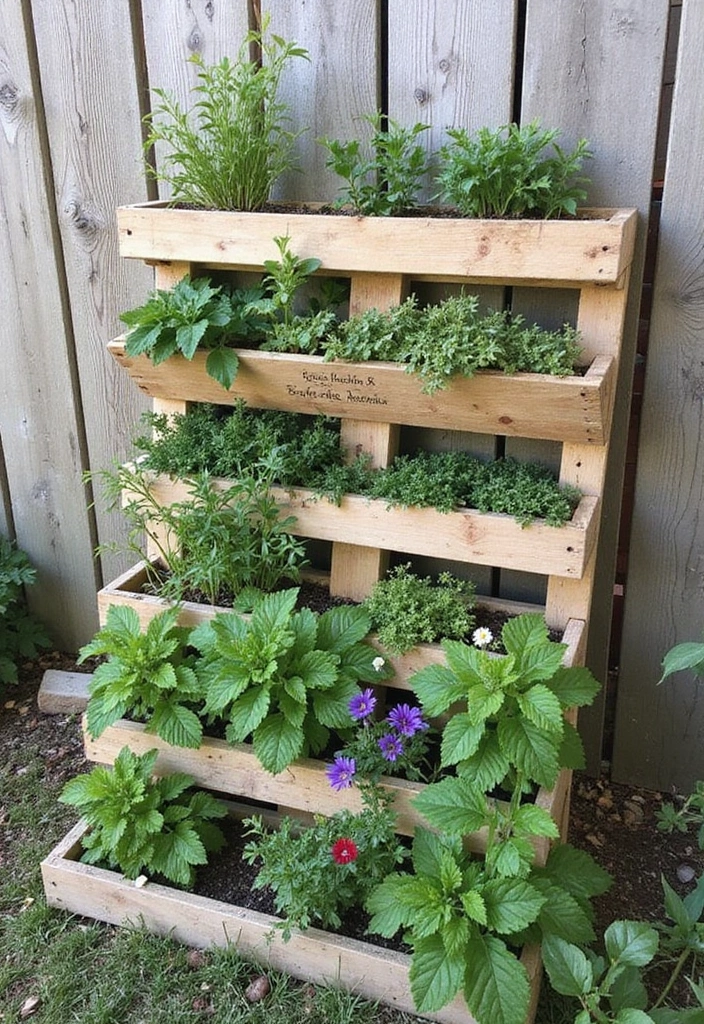
Repurposing wooden pallets for gardening adds a unique touch and is eco-friendly.
These pallets can be transformed into vertical gardens or horizontal beds, ideal for small spaces.
Simply line the pallets with landscaping fabric, fill them with soil, and plant your favorite herbs or flowers. This method allows for excellent drainage and provides a charming rustic vibe.
They’re also inexpensive!
Advice: Look for untreated pallets to ensure your plants are safe from chemicals.
Place your pallet garden against a fence or wall for added support and aesthetic appeal.
4. Corner Raised Beds
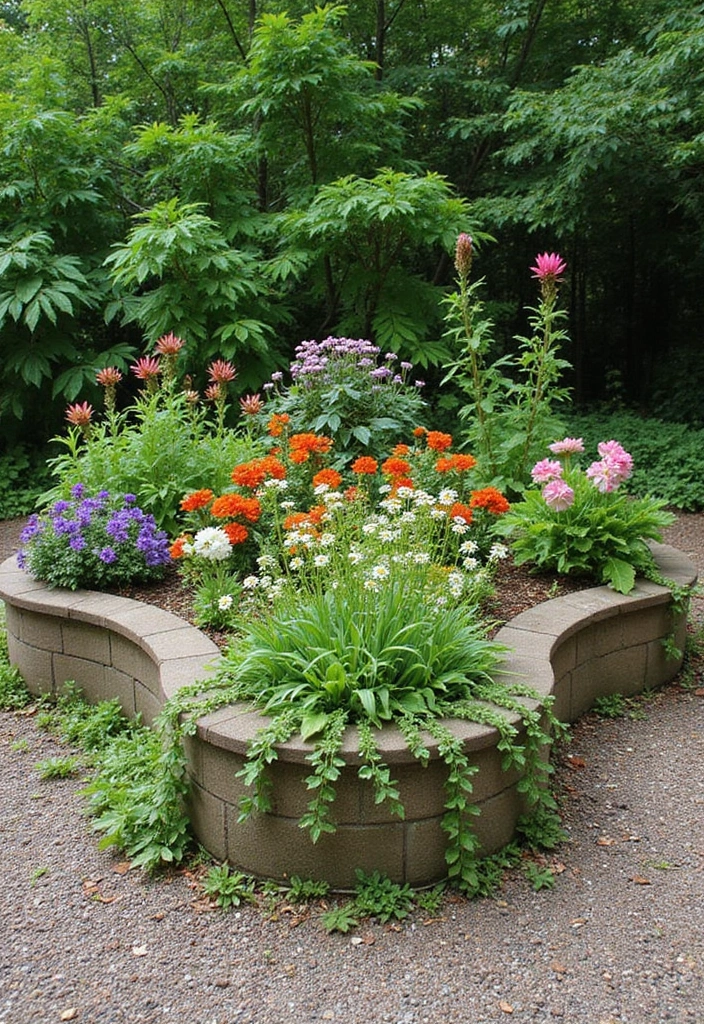
Make use of those often-overlooked corners of your garden with corner raised beds.
These beds can efficiently utilize space while adding style to your garden layout.
You can design them in a triangular or rounded shape to fit snugly into the corner, which helps in growing a variety of plants in a compact area. Consider mixing perennials with annuals for ongoing seasonal interest.
Pro Tip: Adding trellises to corner beds can maximize vertical space for climbing plants like beans and peas.
5. Vertical Frame Gardens
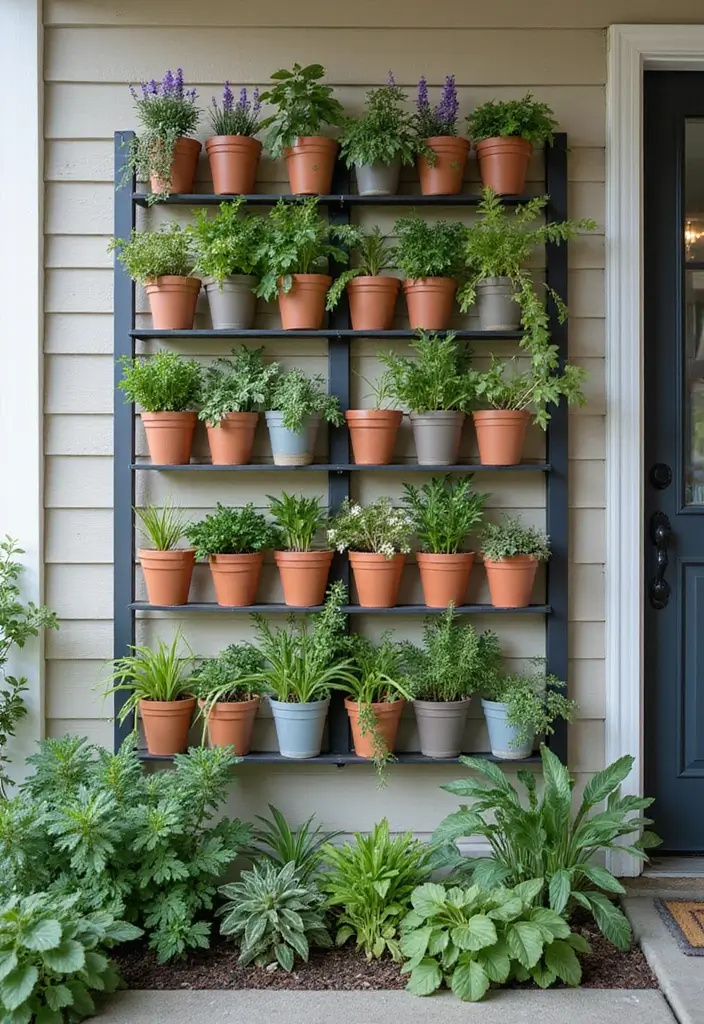
Vertical frame gardens are a trendy way to grow a variety of plants in an eye-catching manner.
Utilizing frames made from wood or metal, you can create a structure that holds multiple planters, allowing you to grow herbs, vegetables, and flowers in a vertical orientation. This not only saves ground space but also adds a decorative element to your garden or patio.
Considerations: Make sure to secure the frame properly for safety, especially if growing larger plants.
Utilize colored pots or planters to create a vibrant display that pops against the frame.
6. Hanging Planter Innovations
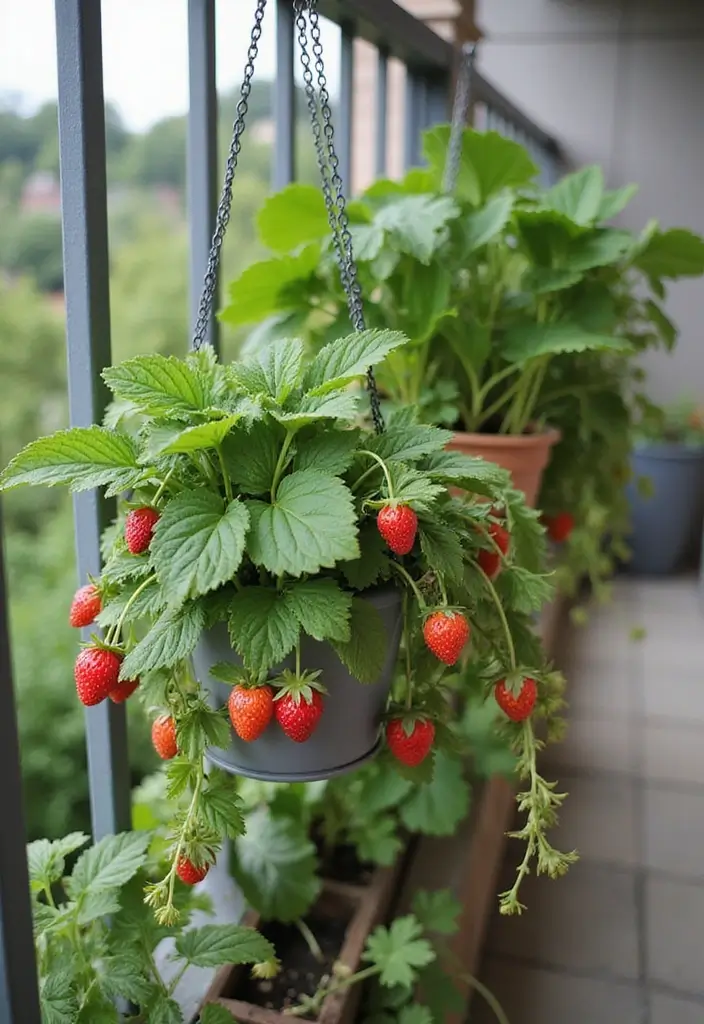
Hanging planters are a fantastic solution for maximizing space while adding a creative flair to your garden.
You can use hooks or a railing to hang pots filled with trailing plants or even small vegetables like strawberries. These planters can be made from a variety of materials including ceramics, metals, or even recycled materials for an eco-friendly twist.
The cascading effect adds beautiful decoration and makes it easy to maintain.
Tips: Ensure that your hanging planters have adequate drainage holes and are secured firmly to withstand wind.
7. Wheelbarrow Gardens
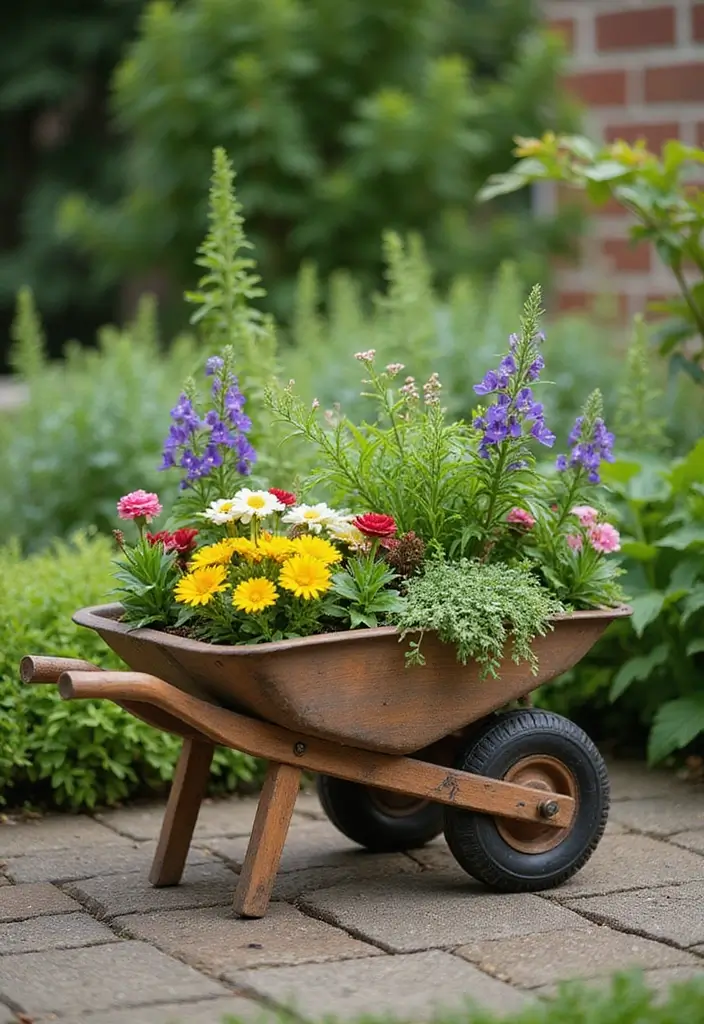
Use an old wheelbarrow as a charming raised bed for your garden!
This quirky design is not only fun but also very practical. Fill the wheelbarrow with soil and your chosen plants, and you have an instant mobile garden that can be placed wherever sunlight is abundant.
This is perfect for small spaces since you can easily move it around.
Bonus Tip: Add flowers like petunias or marigolds to create a colorful display alongside your herbs and veggies.
You can also paint your wheelbarrow for a personalized touch!
8. Geometric Raised Beds
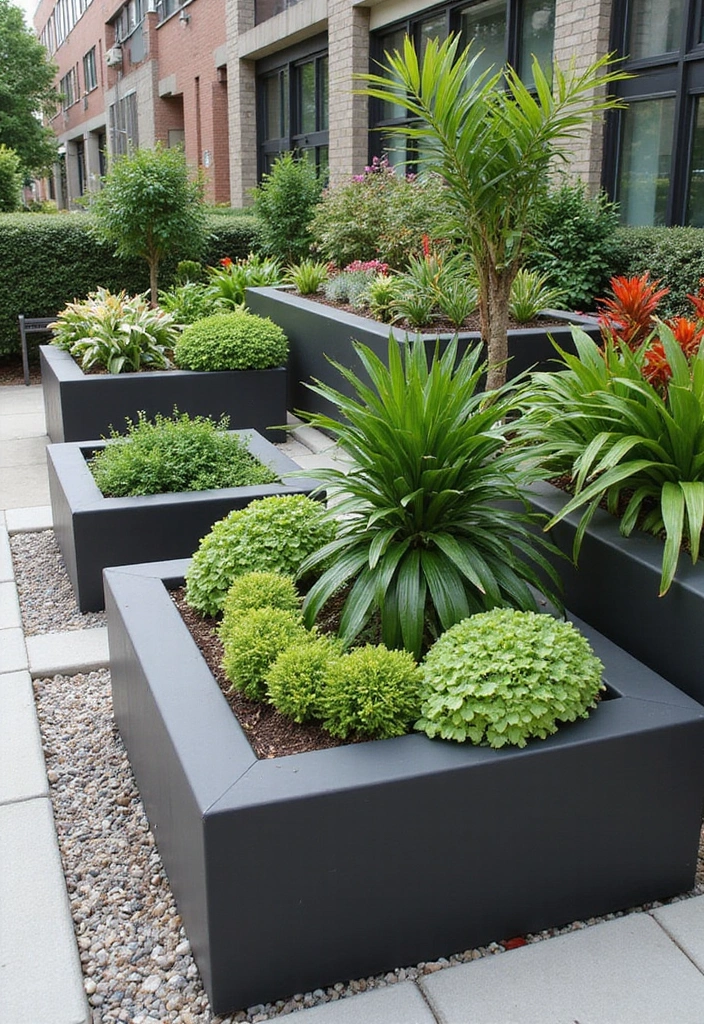
Geometric designs bring a modern twist to traditional raised beds.
You can create hexagons, triangles, or circles that not only serve as practical planting areas but also as striking focal points in your garden. These beds can be built from various materials, including wood, stone, or metal, allowing you to customize them to match your personal style.
Design Tips: Combine different shapes and sizes for visual interest. Plant contrasting colors and plant heights to enhance the geometric effect.
This design is especially appealing in urban gardening solutions where style matters as much as function.
9. Tiered Raised Beds
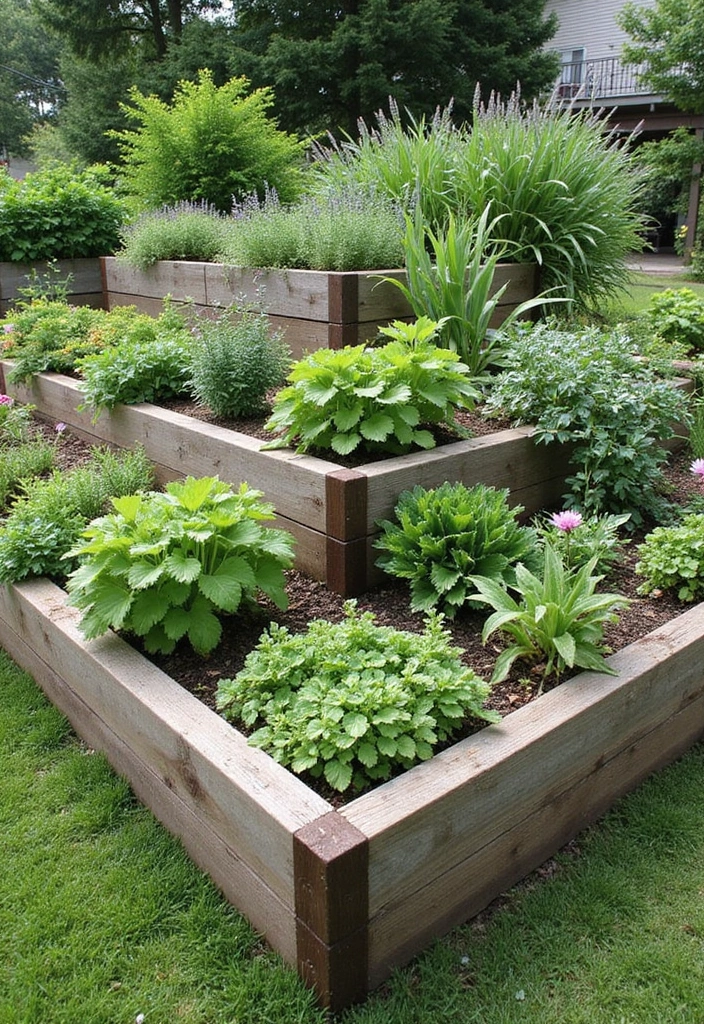
Tiered raised beds maximize vertical space while adding a unique aesthetic to your garden.
Constructed in layers, they allow you to grow a variety of plants at different heights, which can be visually stunning and efficient for space. Each tier can be dedicated to different plant types – perhaps herbs on the top, followed by flowers, and root vegetables below.
Maintenance Tip: Ensure proper drainage in each layer to keep plants healthy.
Utilizing a drip irrigation system can make watering easier and more efficient.
10. Fence-Integrated Gardens
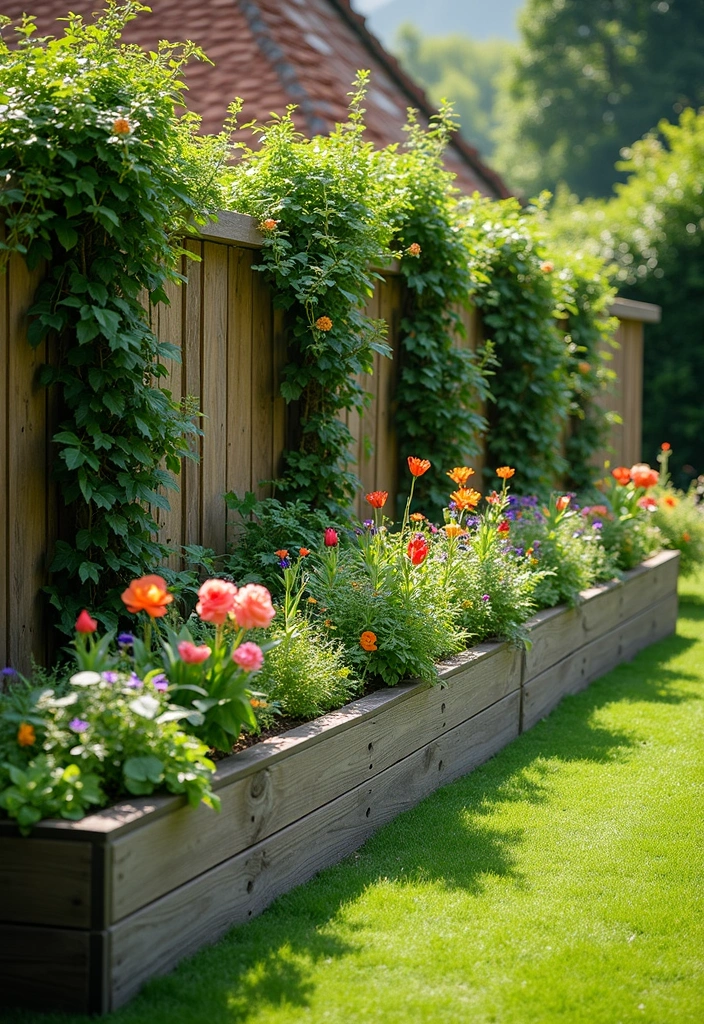
Integrating your raised bed with your fencing creates a cohesive and efficient garden space.
By adding planters directly to your fence or using the fence as a trellis, you can grow climbing plants like cucumbers or beans that beautify your garden and maximize space.
This design also provides a natural barrier against pests.
Notes: Make sure your fence can support the weight of the plants and pots. Use a variety of plants for visual interest and stagger the heights for a lush look.
11. Urban Garden Troughs
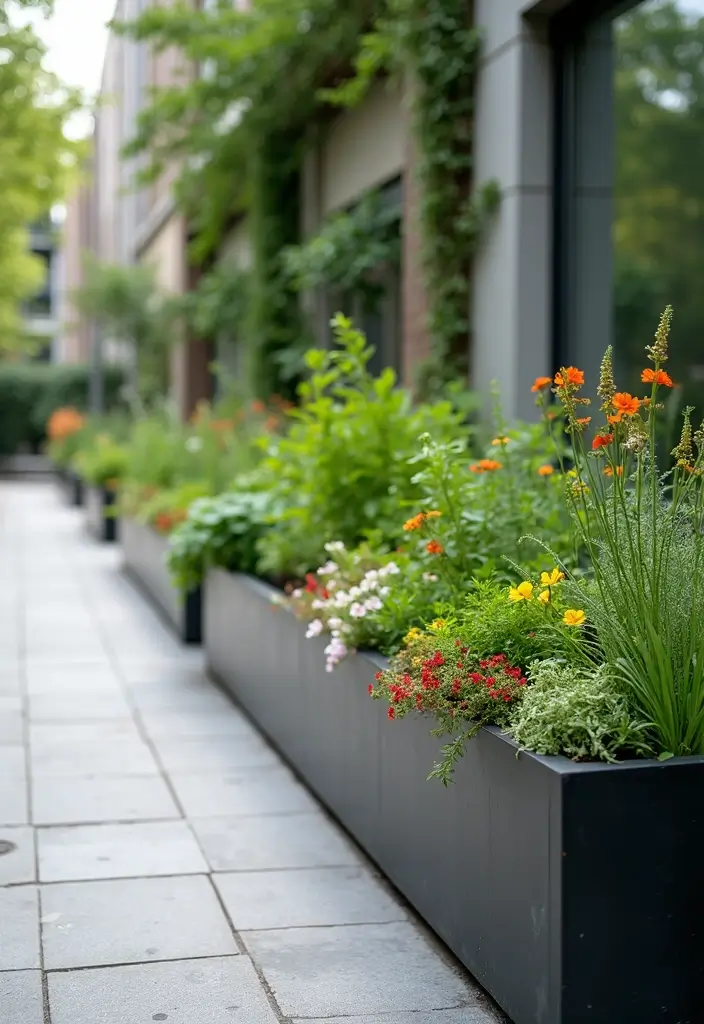
Long, narrow trough planters are perfect for those tight spots in urban gardens.
These planters allow for a wide variety of plants and can be placed along walkways, patios, or balconies. Troughs are often made from durable materials like metal or wood, which provides a rustic charm as well as durability.
Considerations: Make sure the troughs have proper drainage and are deep enough for the root systems of the plants you choose. Plant taller plants at the back and shorter ones at the front to create an attractive arrangement.
12. Herb Spiral Gardens
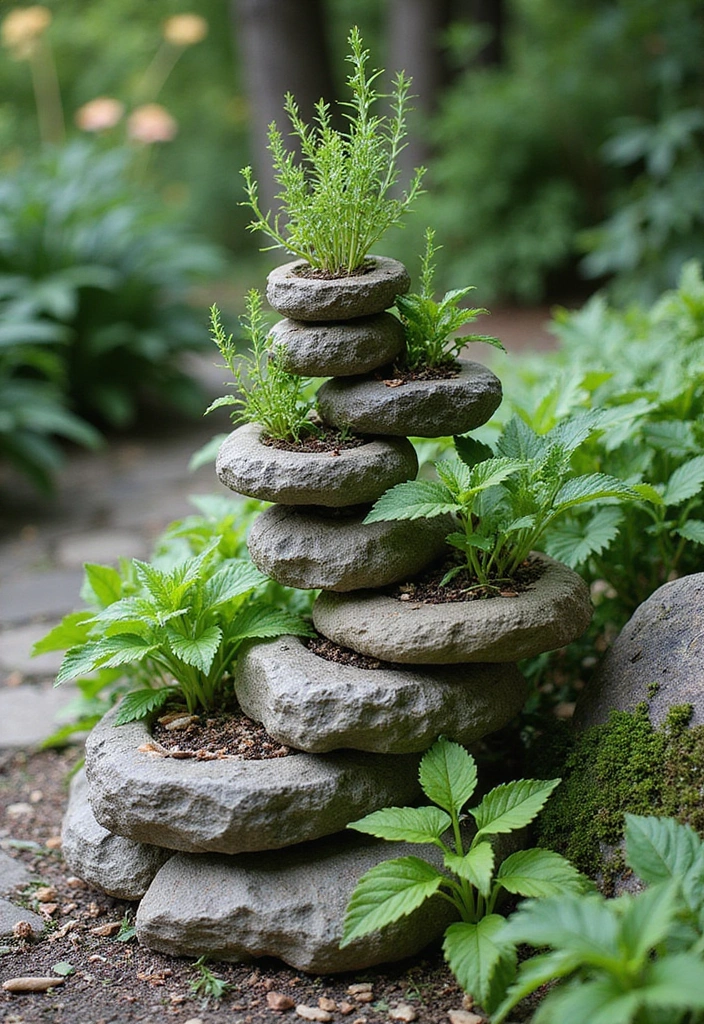
Herb spirals are a creative solution for maximizing small spaces while growing a variety of herbs.
Built in a circular spiral design, they allow for different microclimates within a small footprint, which is great for herbs that prefer different conditions. The height of the spiral creates several levels where you can plant herbs that need varying sunlight and drainage.
Tip: Use stones or bricks to create the spiral structure and fill it with rich soil. This design not only adds greenery but can be a focal point in your garden.
13. Old Tire Gardens
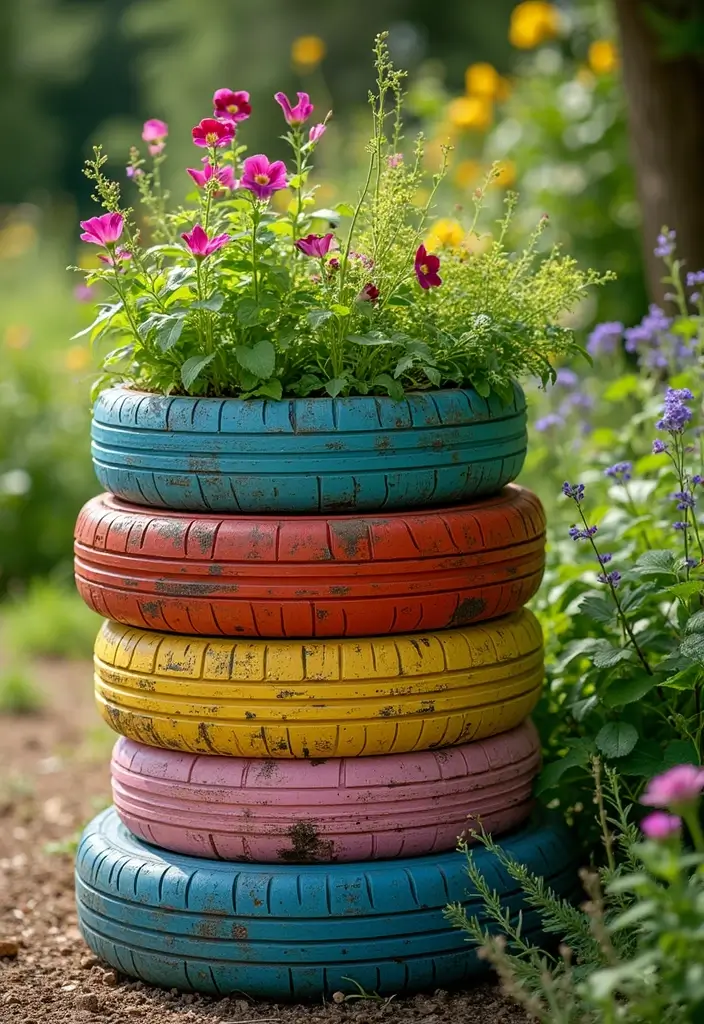
Turn old tires into a creative and colorful gardening solution!
By stacking or arranging tires in unique ways, you can create interesting shapes for planting. They can be painted in fun colors to brighten up your space as well. Fill them with soil and your favorite flowers or herbs, and they create a quirky addition to your garden.
These tire gardens can also be arranged at different heights for added visual appeal.
Maintenance Tip: Make sure to line the tires with plastic or fabric to prevent soil loss and retain moisture.
Plant flowers with varying heights for a fuller look.
14. Container Raised Bed Gardens
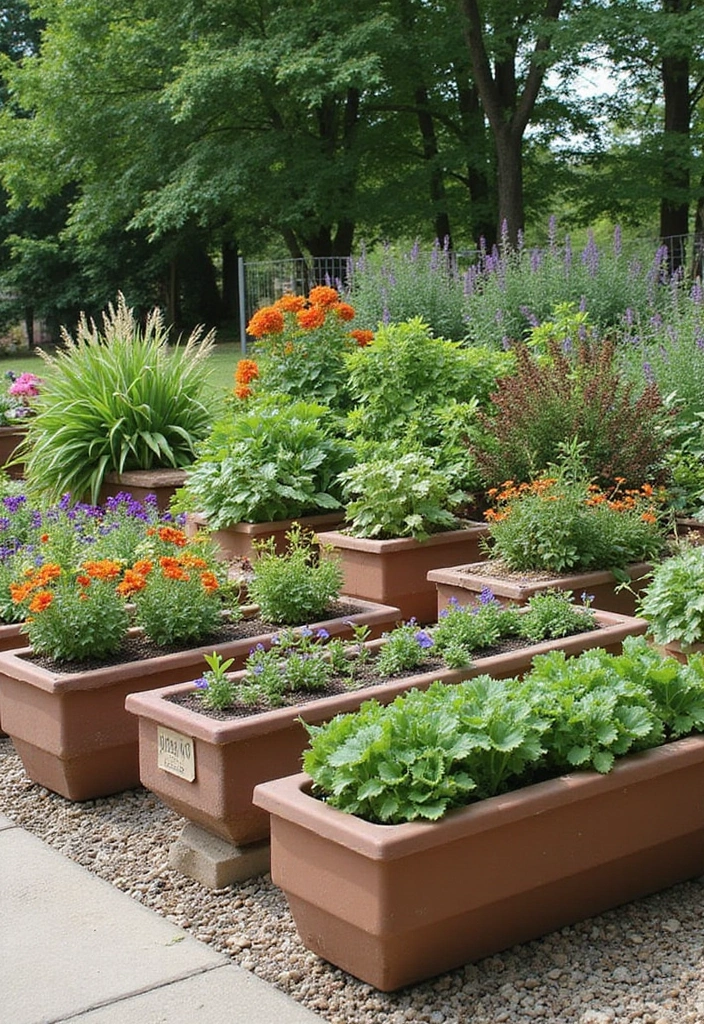
Using large containers as raised beds provides versatility and mobility.
These can be made from various materials like wood, metal, or even decorative ceramics. Containers allow you to mix and match plants that complement each other and can be moved to follow the sun or to protect them from harsh weather.
Planting Tip: Choose plants with similar water and sunlight needs to ensure they thrive together.
Containers can also be a great way to grow veggies on patios or balconies where ground planting isn’t possible.
15. Raised Bed with Trellis Extensions

Incorporate trellis extensions to your raised garden beds to take advantage of vertical growing.
This design allows vining plants like peas, beans, and tomatoes to grow upward, saving horizontal space for other plants. The trellis also adds visual interest and creates a beautiful green wall effect when the plants begin to fill out.
Advice: Choose sturdy materials for your trellis to support heavy vines, and plant complementary crops at the base for a layered effect.
Regularly trim the vines to keep the space manageable and promote healthy growth.
16. Rustic Crate Gardens
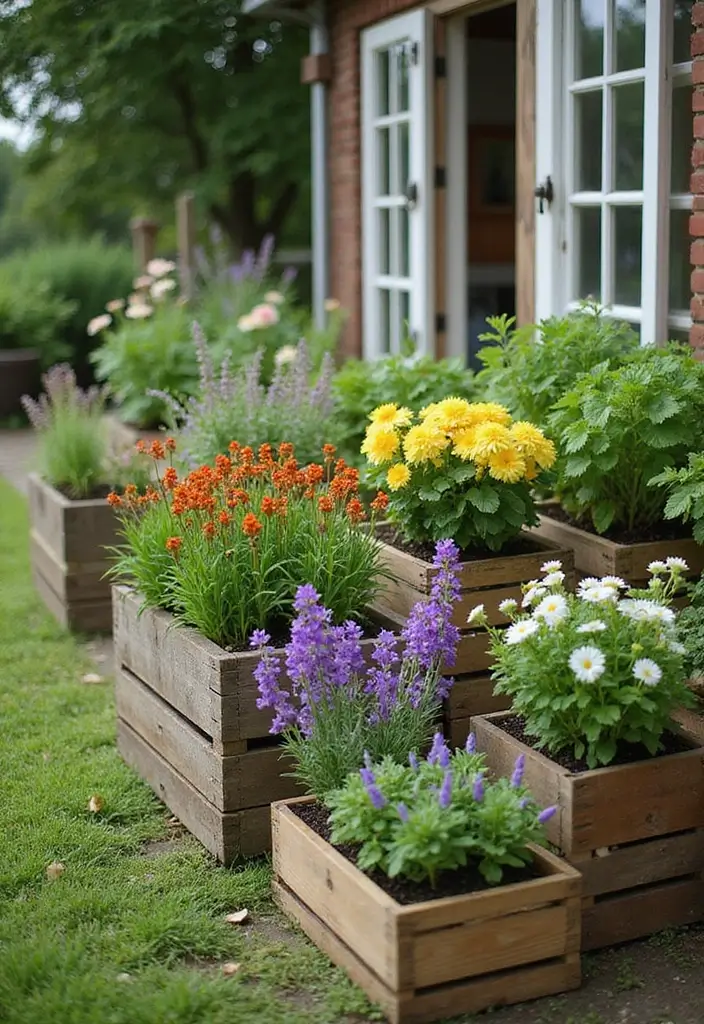
Repurposed wooden crates can create a rustic and charming garden setting.
These crates can be stacked or used individually to create raised beds filled with flowers or vegetables. They offer good drainage and come in various sizes for different planting needs.
Crafting Tip: Sand the edges of the crates for a finer finish and consider lining them with plastic to prolong their life.
Decorate around them with pebbles or mulch for a polished look.
17. Colorful Mosaic Gardens
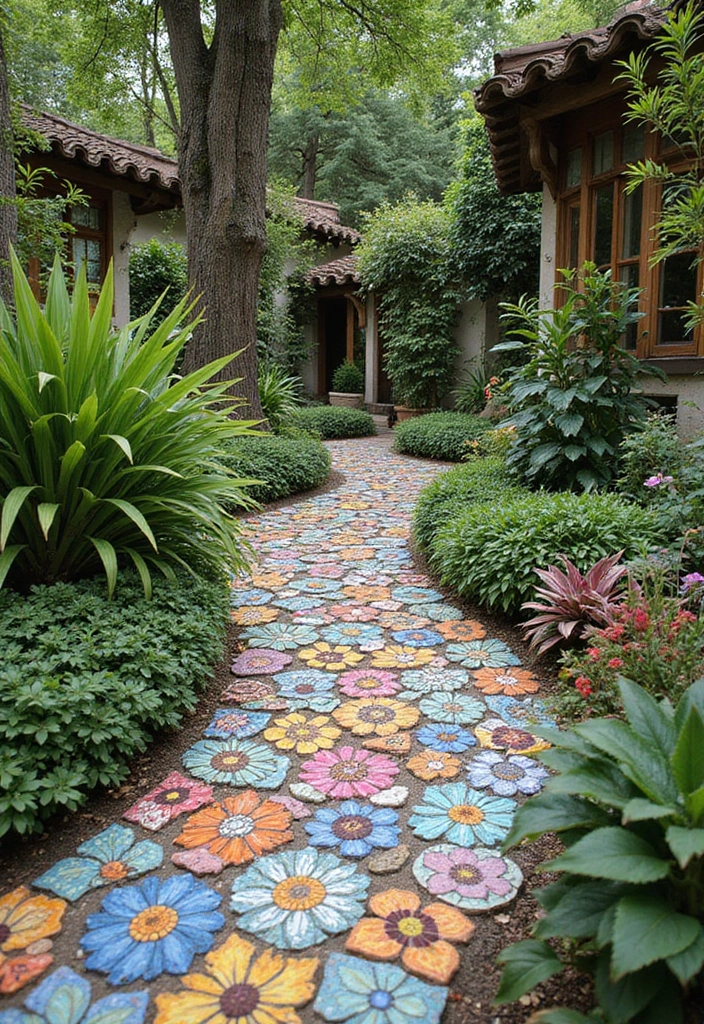
Make a statement with a colorful mosaic garden design!
This approach incorporates colorful tiles or stones into the raised bed structure, creating a stunning visual effect that enhances the beauty of the plants inside. You can use broken ceramics, glass, or even painted rocks to add personality to your garden beds.
Creative Tip: Plan your mosaic design before building to ensure a cohesive look. You can also use this technique on pathways or garden borders to carry the theme throughout your space.
18. Foldable Raised Garden Beds
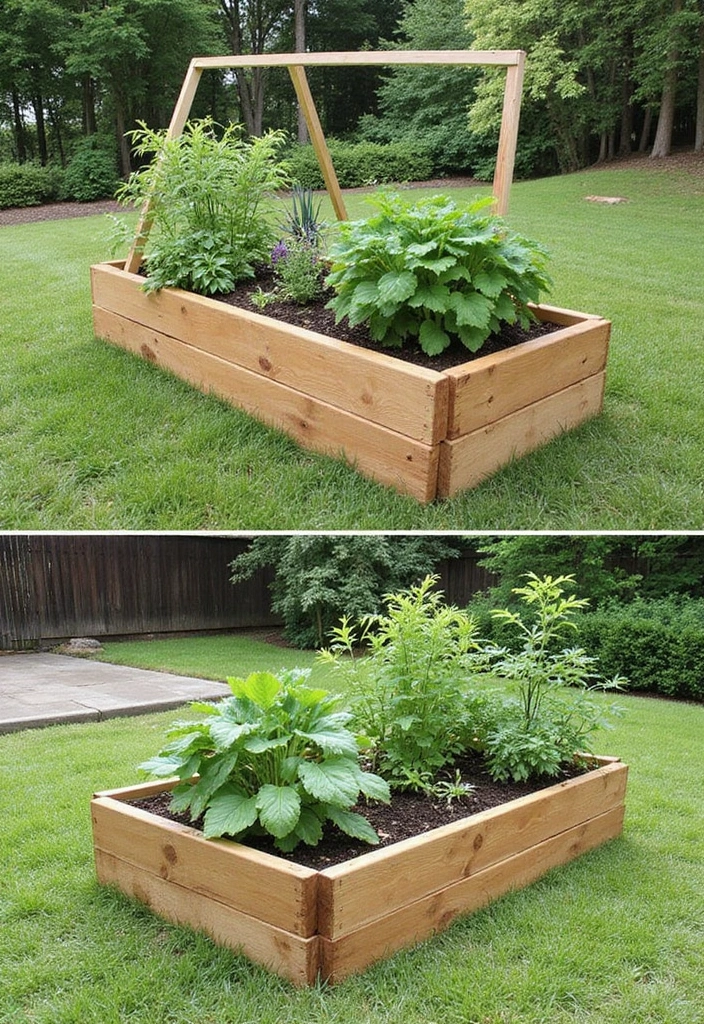
For those who want flexibility, foldable raised garden beds are an excellent option!
These beds can be set up as needed and easily collapsed for storage when not in use. They come in various materials, allowing you to choose one that fits your aesthetic, and are perfect for renters or those with limited space.
Setup Tip: Ensure they are securely anchored if left outdoors to prevent shifting or toppling over. Use lightweight soil to make them easier to move.
19. Edible Flower Gardens
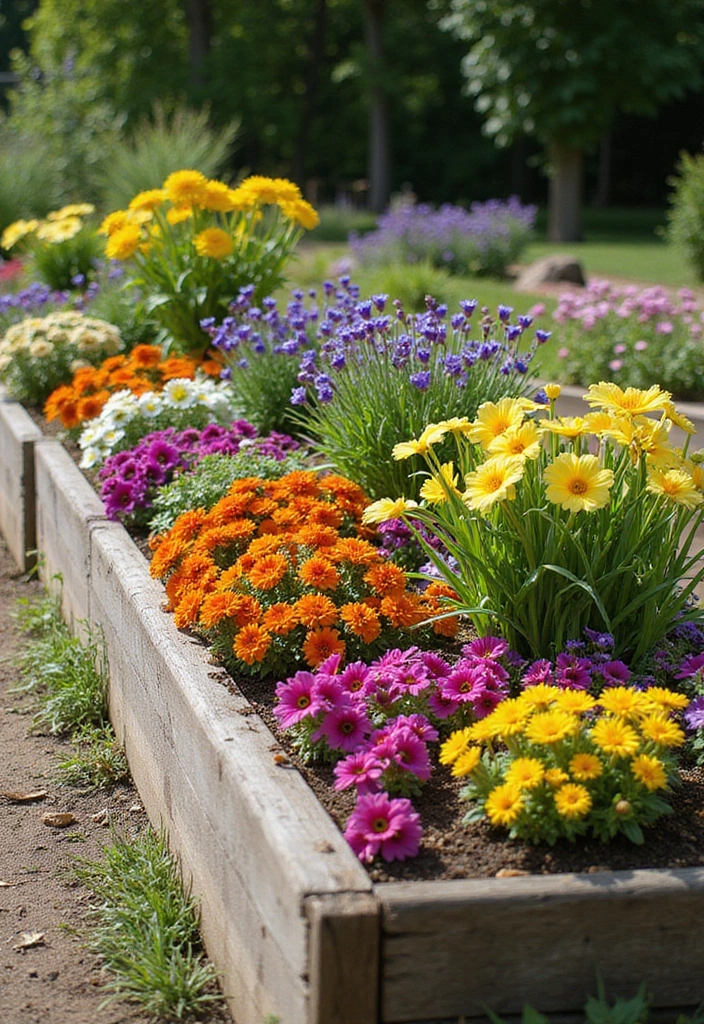
Combine beauty and functionality with an edible flower garden!
Design a raised bed specifically for growing flowers that are not only stunning but also edible. Plants like nasturtiums, pansies, and marigolds can add color to your dishes and attract beneficial insects to your garden.
These can easily be incorporated into your existing raised beds or created as a dedicated space.
Advice: Make sure to research which flowers are edible and avoid using pesticides to keep them safe for consumption.
20. Pallet Wall Gardens
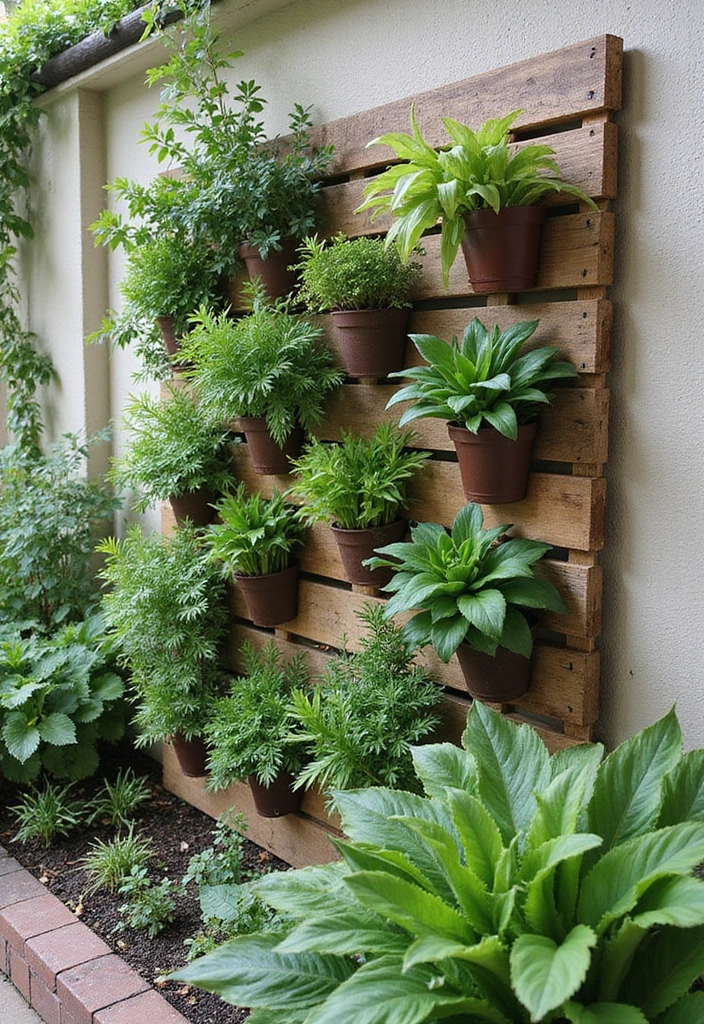
Pallet wall gardens are not only trendy but also perfect for small spaces.
You can mount a pallet vertically, fill it with potted plants, and create a green wall that thrives without taking up much ground space. This design works well for herbs, succulents, or small vegetables, providing a unique visual and functional aspect to urban gardening.
Tip: Securely mount the pallet to your wall and water carefully to avoid overwatering the plants at the bottom.
Consider painting the pallet for added aesthetic appeal.
21. Integrated Water Features
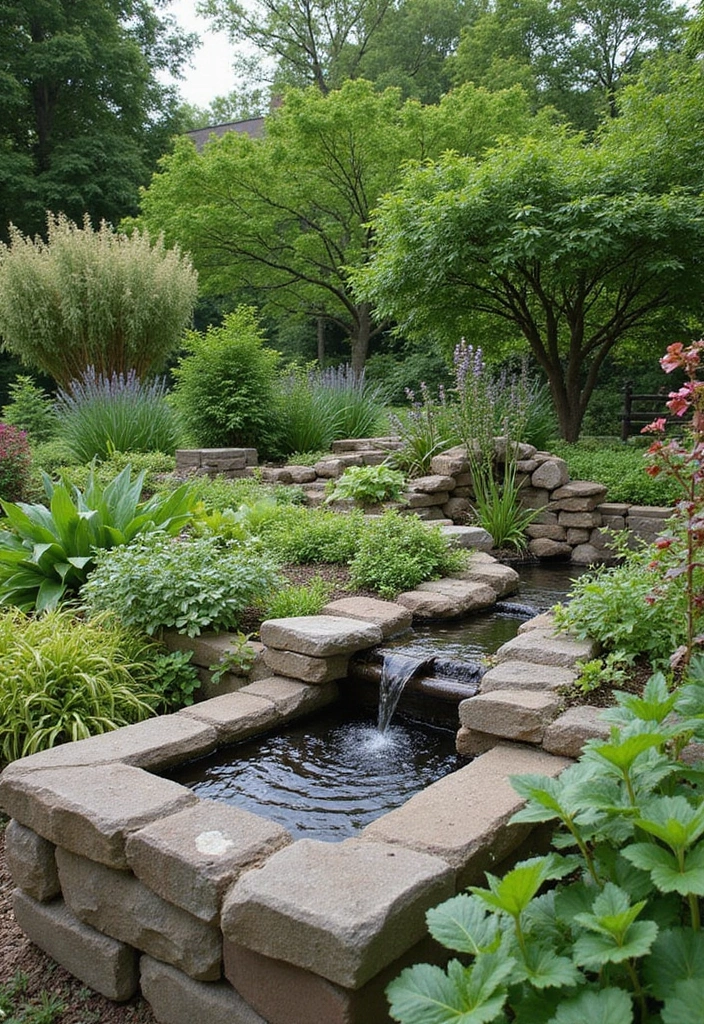
Adding a water feature to your raised bed garden can create a serene environment while helping with plant hydration.
You can design a raised bed with a small fountain or a pond that also serves as a reservoir for the plants. This not only saves water but also attracts wildlife, adding biodiversity to your space.
Maintenance Tip: Ensure the water feature is properly installed and consider using a solar pump for sustainability. Incorporate plants that thrive in wet conditions around the feature for a natural look.
22. Straw Bale Gardens
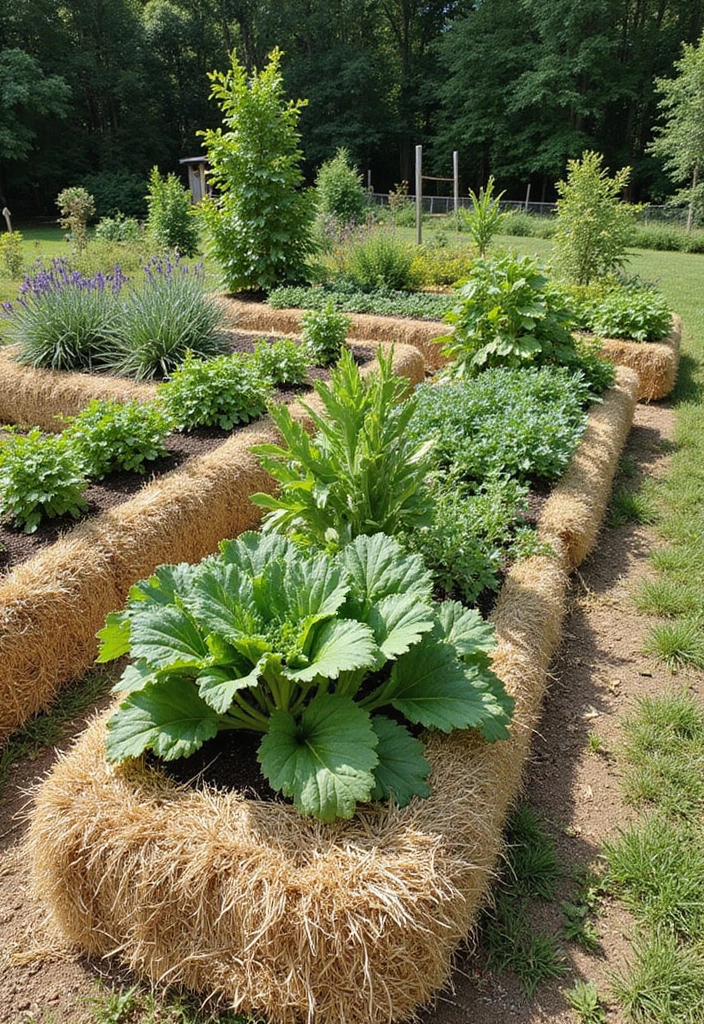
Straw bale gardening is an innovative and eco-friendly way to grow plants in small spaces.
By utilizing straw bales as planting beds, you create a warm growing environment for vegetables while repurposing natural materials. This method works well for root vegetables and even cucumbers and tomatoes.
Tip: Soak the bales for a few days before planting to kickstart the decomposition process. Always ensure proper drainage to prevent waterlogging.
23. Raised Garden Bed with Bench
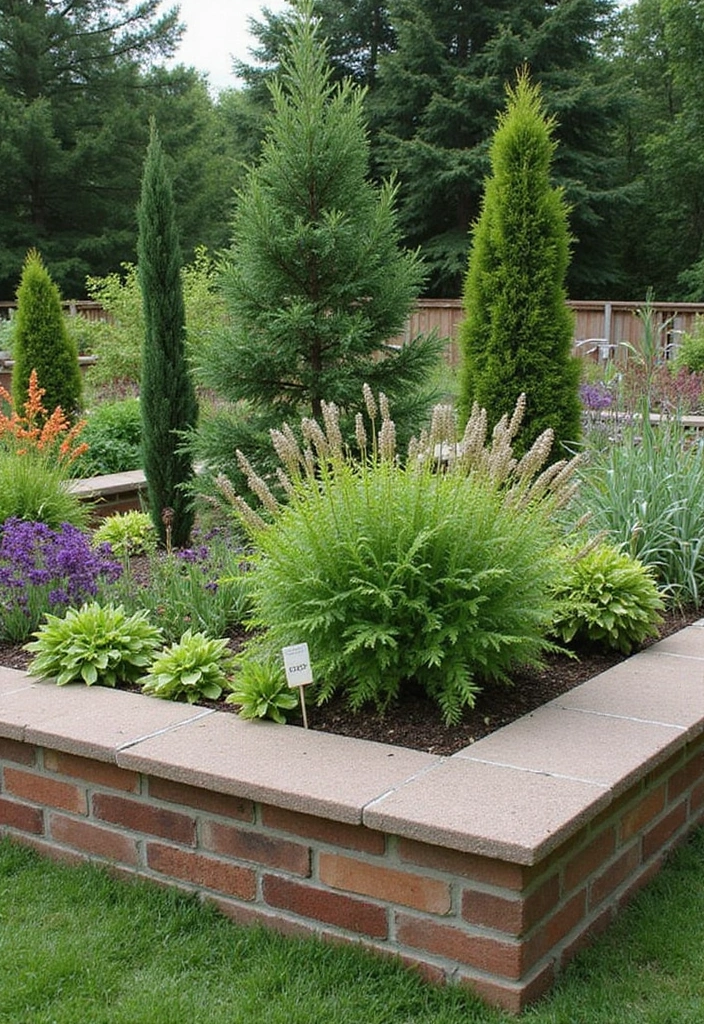
Combine seating and gardening with a raised garden bed that features built-in benches!
This design not only provides space for your plants but also doubles as a cozy spot to relax and enjoy your garden. The benches can be made from the same materials as the raised bed for a cohesive look.
Design Tip: Choose plants that can handle some foot traffic and won’t mind being brushed against. Consider surrounding the bench area with fragrant herbs or flowering plants for added sensory appeal.
24. Recycled Material Gardens

Get creative with recycled materials to build unique raised bed gardens!
Think outside the box and use materials like old bricks, wood scraps, or even concrete blocks to create stunning garden beds that tell a story. This not only saves money but adds a distinct charm to your garden.
Creative Tip: Mix and match materials for a visually interesting design. Consider placing herbs or flowers in gaps between materials for a lush look.
25. Shade Garden Beds

If your outdoor space has areas with limited sunlight, consider creating raised beds specifically for shade-loving plants.
Design beds that blend into these shady spots, allowing you to grow plants like ferns, hostas, or certain herbs that thrive in lower light conditions. This approach maximizes every inch of your garden and showcases the beauty of shade plants.
Tips: Use lighter materials that won’t absorb too much heat. Incorporate decorative stones or mulch for aesthetics while keeping the soil moist.
Shade doesn’t mean dull! Transform those shadowy corners into vibrant raised bed gardens filled with lush ferns and herbs—because every inch of your space deserves to shine!
26. Self-Watering Raised Beds
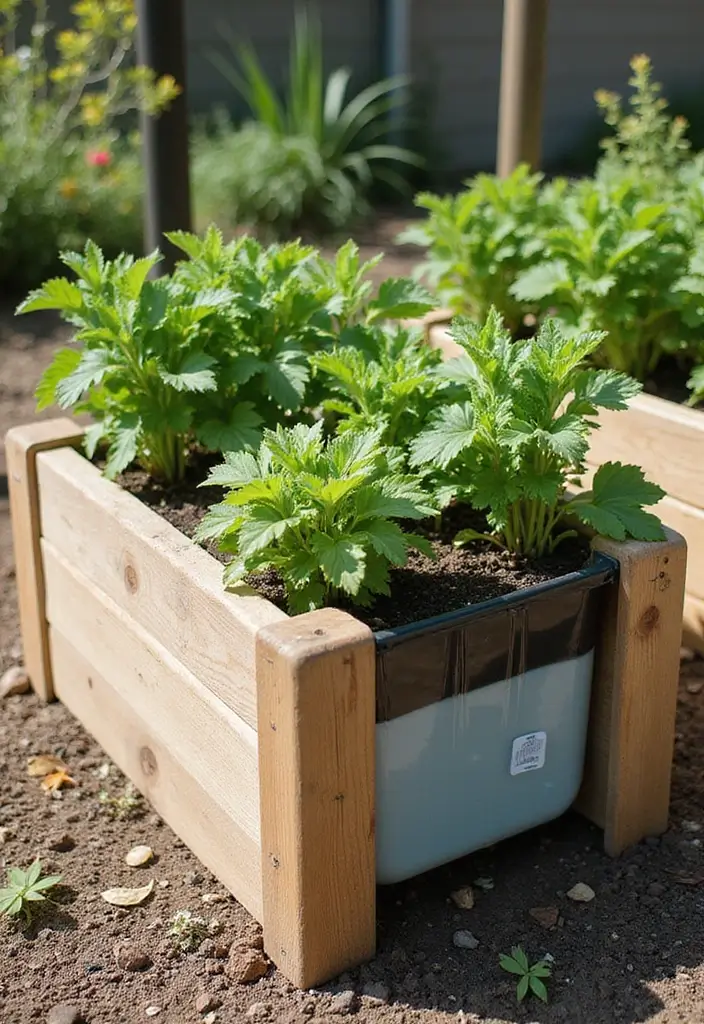
Self-watering raised garden beds are perfect for busy gardeners or those living in hot climates.
These innovative designs include a reservoir system that allows plants to draw water as needed, ensuring consistent moisture levels without daily watering. You can build one with a simple PVC pipe and a larger container below the soil level or purchase pre-designed kits.
Tip: Opt for drought-resistant plants to maximize the benefits of your self-watering system. Keep the reservoirs clean and filled regularly to ensure optimal plant growth.
Water your garden, not your schedule! Self-watering raised beds take the stress out of gardening, allowing plants to thrive even in the hottest months. Choose drought-resistant plants for an effortless green oasis!
27. Community Raised Bed Gardens
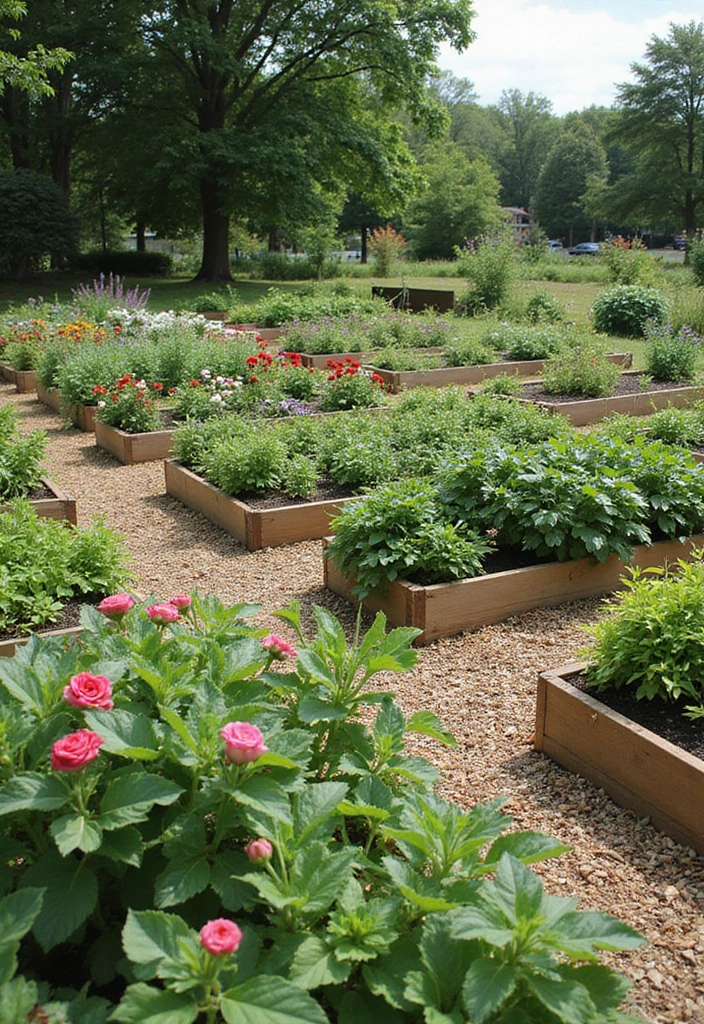
Encouraging community involvement through shared raised bed gardens is an enriching experience!
Design a series of connected raised beds for community gardening, where neighbors can grow and share their produce. This fosters relationships and promotes sustainable practices in urban areas.
Planning Tip: Include a variety of plants that cater to different tastes and needs, ensuring everyone has a part in the garden. Create common pathways for easy access and maintenance.
28. Wildlife-Friendly Raised Beds
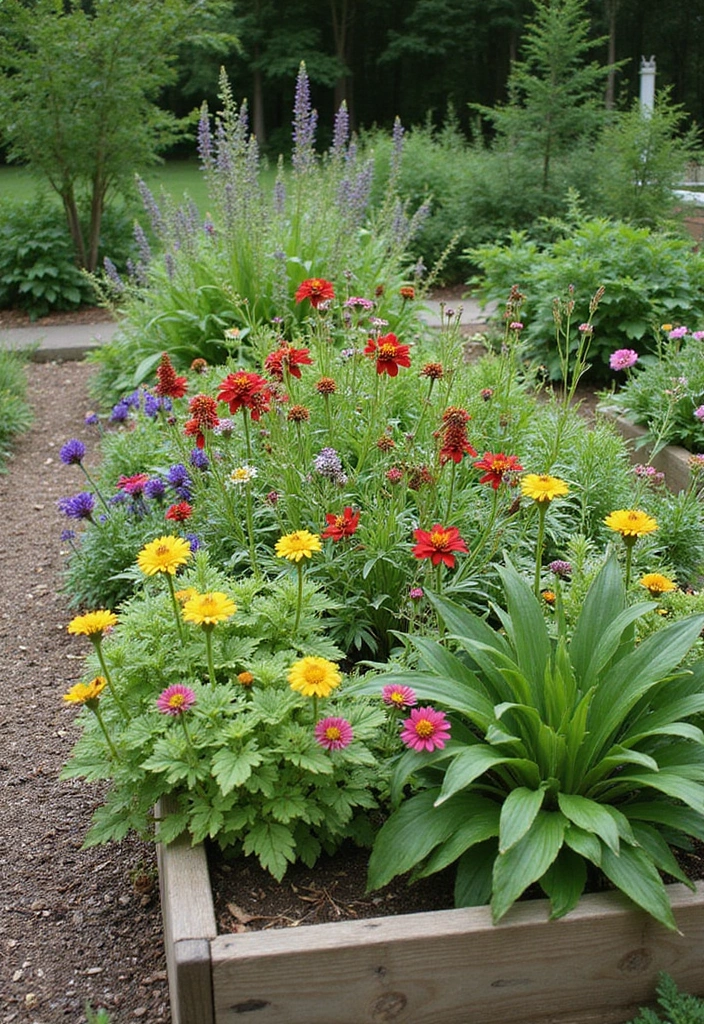
Create a wildlife-friendly garden with raised beds designed to attract beneficial insects and pollinators.
Incorporate native plants that support local wildlife and use protective borders to keep out unwanted pests. Add small water features to provide hydration for birds and insects.
Advice: Avoid using harmful pesticides to keep your garden safe for wildlife. Consider planting a variety of flowering plants that bloom at different times to provide continuous food sources.
This approach not only supports nature but also enhances the beauty of your garden.
A wildlife-friendly garden isn’t just beautiful; it’s a sanctuary! By choosing native plants and avoiding harmful pesticides, you create a buzzing ecosystem that supports pollinators and local wildlife.
29. Eco-Friendly Raised Bed Designs
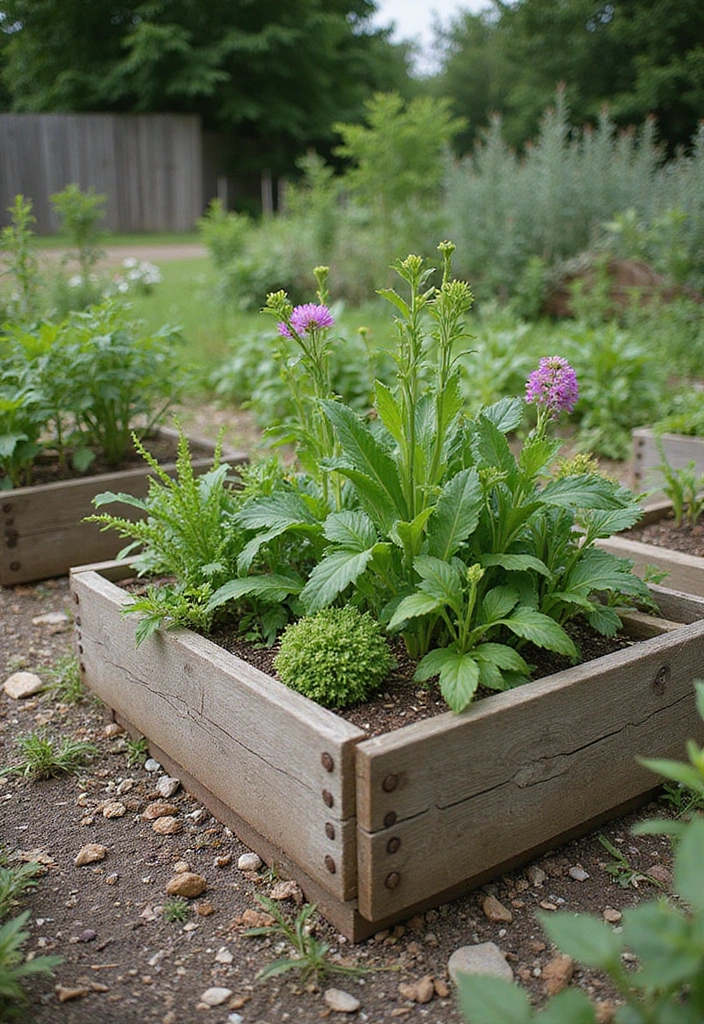
Sustainable gardening starts with eco-friendly raised bed designs that minimize environmental impact.
Use reclaimed wood, natural stones, or biodegradable materials to create your garden beds. This reduces waste and gives your garden a unique, rustic charm.
Tip: Incorporate composting areas or worm bins to keep your garden organic and self-sustaining. Using native plants can also help reduce the need for extra watering and chemical fertilizers.
30. Seasonal Raised Bed Rotations

Maximize your raised bed’s potential by implementing seasonal rotations.
This method allows you to grow different crops throughout the year, ensuring soil health and maximizing yields. Rotate heavier feeders like tomatoes and squash with lighter crops like lettuce or carrots to maintain nutrient balance.
Strategic Tip: Plan out your planting schedule based on seasonal availability and climate to ensure you always have thriving plants in your raised beds. This keeps your garden fresh and vibrant through every season.
Final Thoughts on Raised Bed Garden Designs
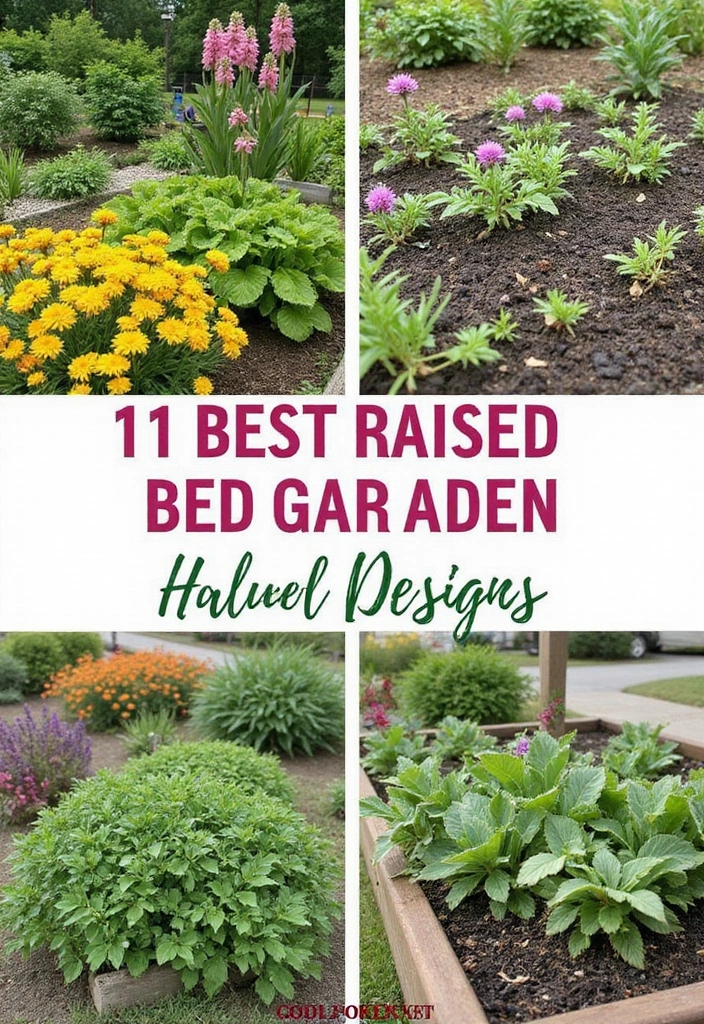
With these 30 innovative raised bed garden designs, your small space can become a vibrant oasis filled with life.
Embracing vertical gardening ideas and creative layouts not only allows for efficient space use but also adds stunning visuals to your surroundings.
As you dive into these designs, remember to tailor them to your personal style and local climate. Happy gardening!
